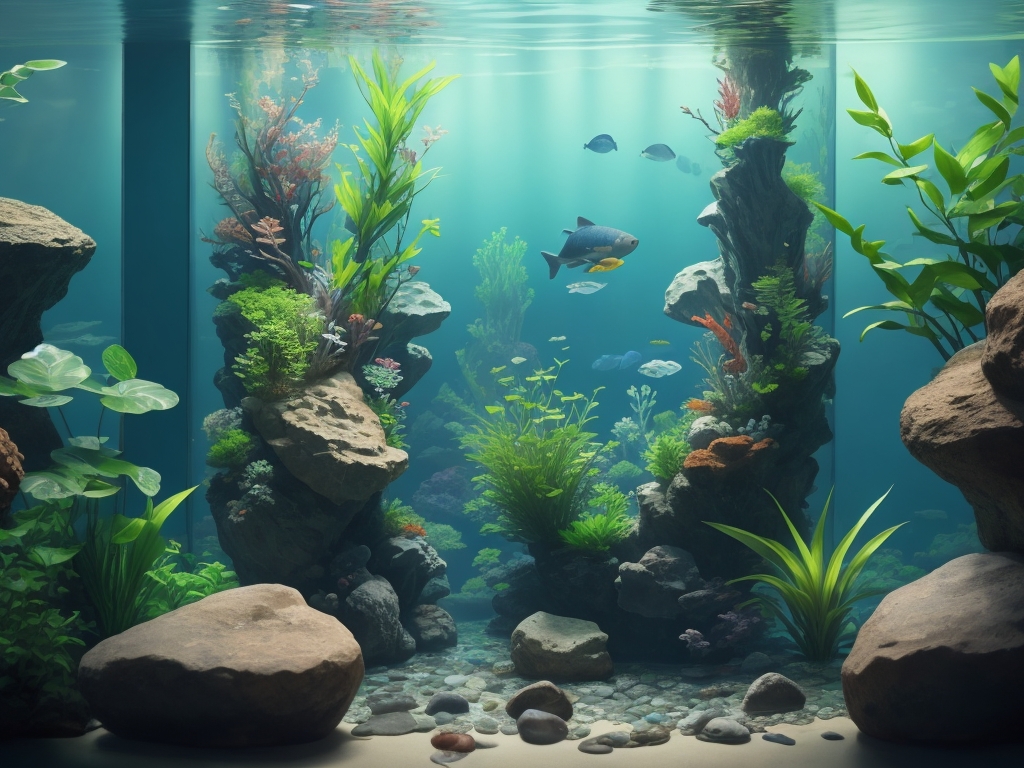Does Aquarium Filter Need to Run Always
Do you have a fish tank at home and wonder if the filter needs to run all the time? The answer is yes! Keeping the aquarium filter running is essential for the health of your fish.
It removes bad bacteria and keeps the water clean and fresh. Plus, turning off the filter can reduce oxygen flow, which can be harmful.
Read on to learn more about keeping your fish tank filter running and how to reduce noise and power consumption.
Basics of an Aquarium Filter
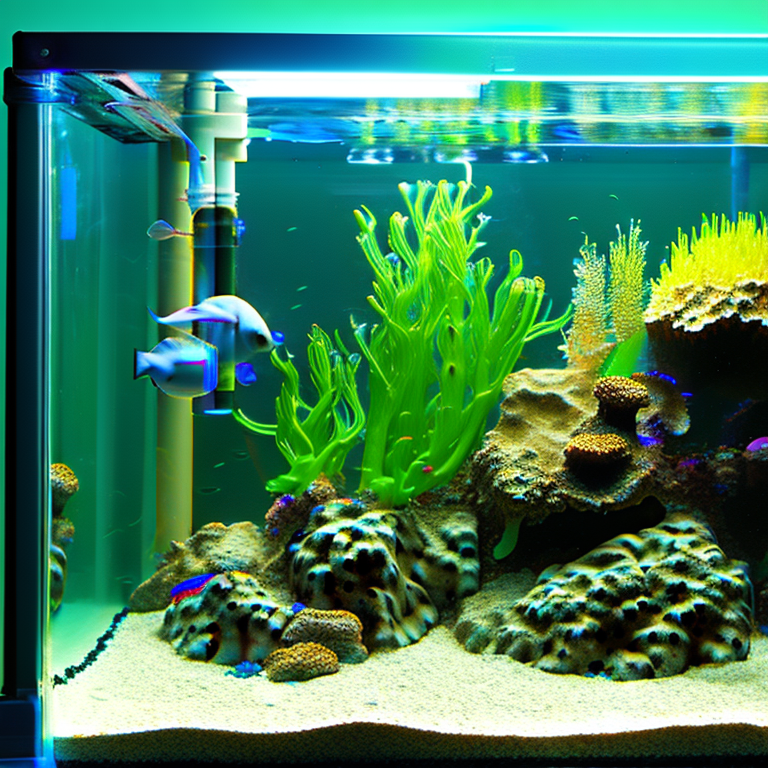
You should understand the basics of an aquarium filter before you start running it all the time.
An aquarium filter is a device that’s used to clean the aquarium water and prevent it from becoming stagnant. It works by passing the water through filter media, such as charcoal, sponges, and other materials, which trap debris, remove toxins, and provide a home for beneficial bacteria.
The filter also helps to create water flow and movement in the aquarium, which is necessary for oxygenation and the nitrogen cycle. The filter system also helps to keep the surface of the water clean, which helps to improve the appearance of the aquarium.
Importance of Filter Running Continuously
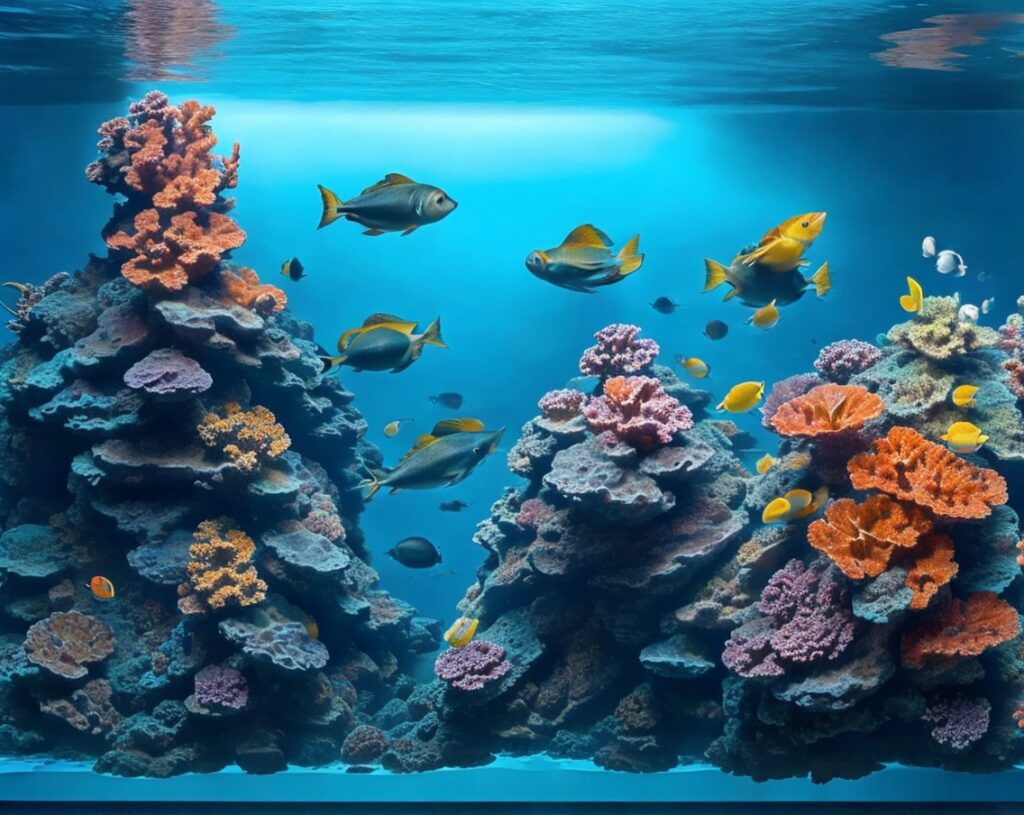
Maintaining a continuous filter operation is critical to keeping your aquarium clean and healthy. An aquarium filter helps to remove bad bacteria and waste materials from the tank while also adding oxygen to the water. Additionally, it helps to ensure that the water is kept clean and fresh. While it’s okay to turn off the filter for short periods of time, such as when feeding your fish, it’s recommended to keep the filter running all the time.
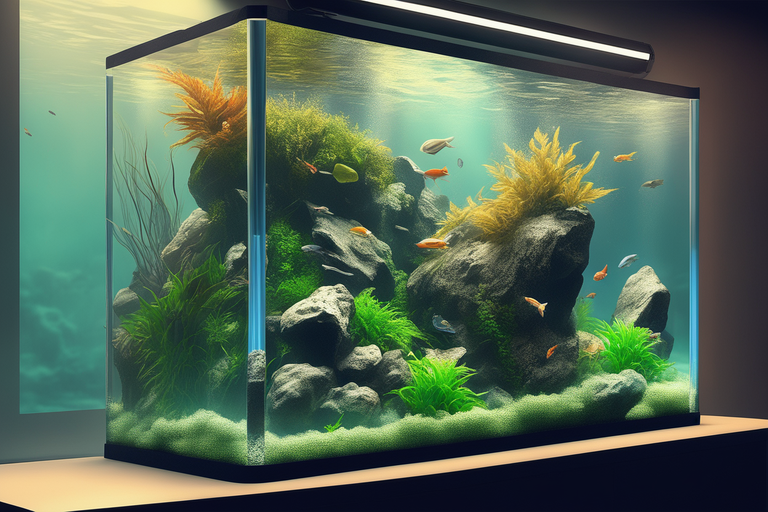
There are several types of filters available, including canister, undergravel, and hang-on-back (HOB) filters. Each type of filter works by using a combination of mechanical and biological filtration to keep the tank clean. In order to keep your fish healthy, it’s important to make sure that the filter is running and that the water isn’t allowed to become stagnant.
Here are some tips for keeping your aquarium filter running all the time:
- Regularly clean the filter to prevent clogging and ensure that it’s working properly
- Choose a good quality filter that’s designed for the size of your tank
- Make sure that the filter is securely attached to the tank and that all of the connections are properly sealed
- Use a filter with adjustable flow settings to ensure that the water is getting enough oxygen
Risks of Turning Your Filter Off
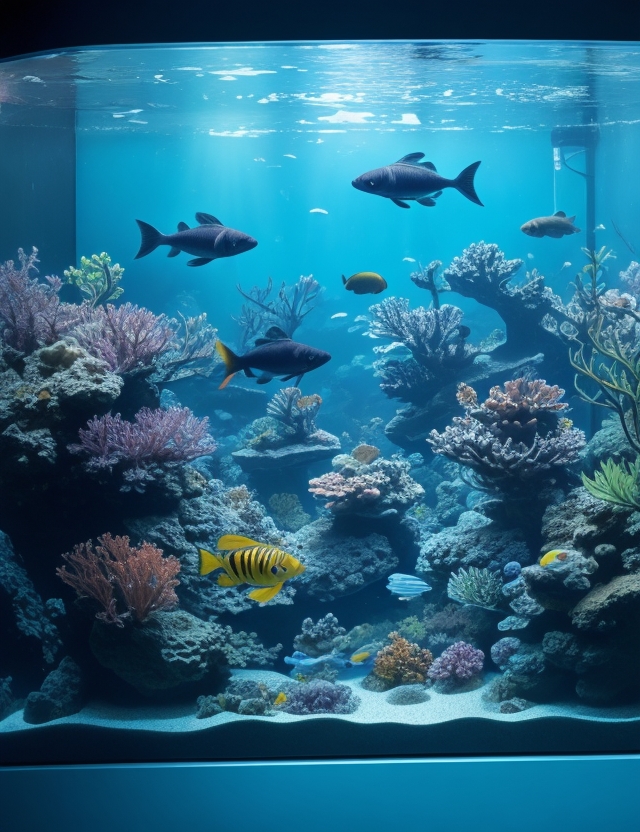
You’re risking your fish’s health if you turn off your filter too often. Aquarium filters need to run around the clock to keep the tank clean and the water oxygenated. Keeping the filter on all the time prevents the build-up of dangerous bacteria, which can cause disease in your fish. A good filter should last 4-5 years or more, and can be turned off while you’re feeding your fish to give the motor a break.
| Benefits | Risks |
|---|---|
| Removes bad bacteria | Low oxygen flow |
| Keeps tank clean | Fish difficulty breathing |
| Water fresh | Regular turning off puts fish health at risk |
| Oxygen flow | Increase power consumption |
Using an air stone also helps oxygenate the water, but it’s not enough. Filters with adjustable flow settings can reduce noise, and sponge filters produce less noise than other types. Properly installed filters with foam padding to dampen vibrations can also reduce noise. Cleaning the filter regularly also helps reduce noise caused by debris.
“Fish Die if I Turn”: Misconceptions

Many people think their fish will die if they turn off their aquarium filter, but this isn’t true. The filter plays an important role in a fish tank, keeping the tank clean and water fresh, and removing bad bacteria from the tank. However, it isn’t necessary to keep the filter running 24/7 and there are certain situations where it’s okay to turn the filter off.
Here are 4 misconceptions about turning the filter off at night:
- Turning off the filter at night will kill the fish – It’s actually the lack of oxygen in the tank water that’s harmful to the fish, not the filter being turned off. An air pump or other equipment can be used to maintain oxygen levels in the tank.
- Ammonia and nitrite levels will increase – Ammonia and nitrite levels can increase if the tank water isn’t changed regularly, but turning the filter off at night won’t make the levels rise.
- The filter will get ruined – The filter won’t be damaged if it’s turned off for one night, but it shouldn’t be a regular habit.
- It will save energy – Fish tank filters are actually low power-consuming compared to other equipment, so turning off the filter won’t save energy.
It’s important to remember that the filter plays an important role in keeping the tank clean and healthy, so make sure it’s running for most of the time.
Filter Off at Night: Pros and Cons
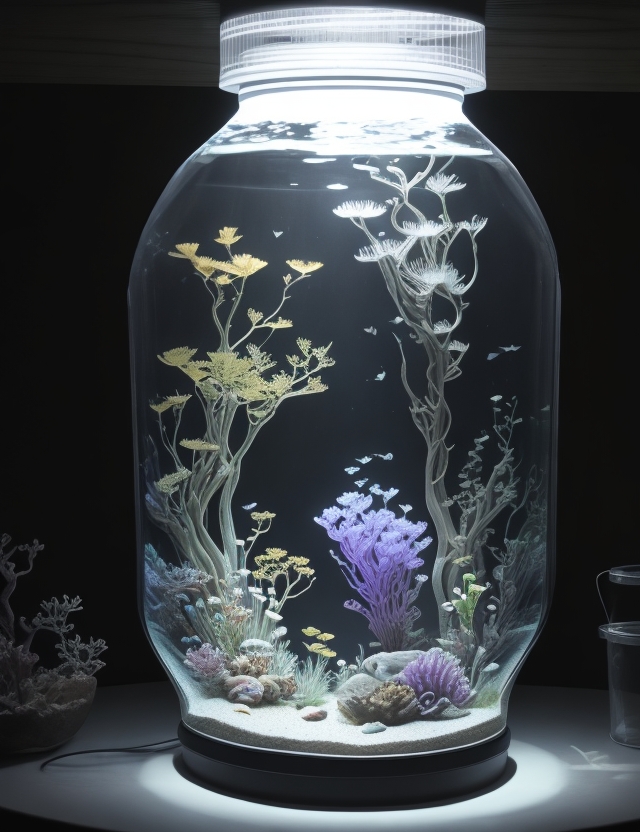
You’re probably wondering if it’s okay to turn the filter off at night, and if so, what are the pros and cons? Generally speaking, it’s not a good idea to turn the aquarium filter off at night, as it’s important for the filter to keep running to keep the tank clean. However, there are a few instances when it’s okay to turn the filter off.
| Pros | Cons |
|---|---|
| Save electricity | Reduced oxygen flow |
| Filter isn’t working properly | Bad bacteria can accumulate |
| Filter and air pump are both running | New filter is needed |
When the filter is turned off, it reduces the oxygen flow in the water, which is unhealthy for the fish. It’s also possible for bad bacteria to accumulate in the tank if it isn’t cleaned regularly. When the filter isn’t working properly, it may be necessary to turn it off and get a new filter. It’s also fine to turn off the filter if both the filter and air pump are running, as this can save electricity.
It’s important to make sure the filter sits securely in the tank and to regularly clean the filter so that it doesn’t become noisy. If the filter is too noisy, then you may need to replace it with a modern filter. Turning the filter off at night should only be done occasionally and it’s important to remember to turn it back on the next day. Keeping the filter running all the time is the best way to keep the tank clean and healthy.
Air Pump vs. Aquarium Filter
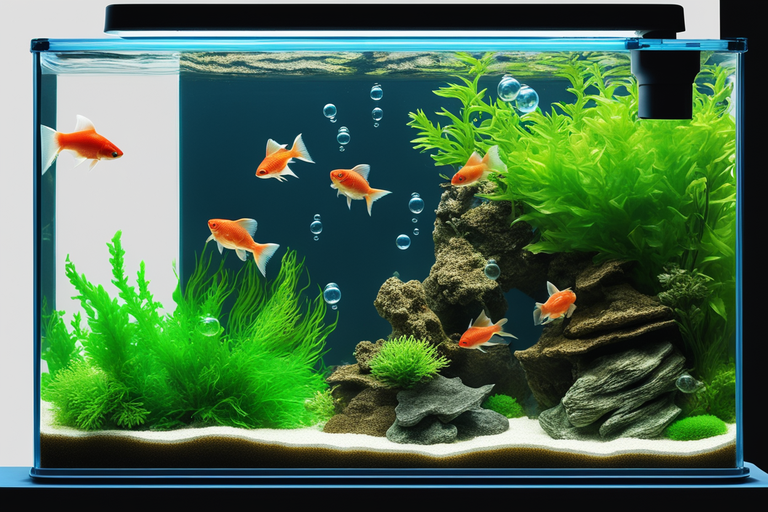
Comparing an air pump to an aquarium filter, you’ll find that a filter is better at keeping your tank clean and the water fresh. With a filter, fish waste and other debris are removed from the water, and the water level and water in the aquarium is kept at a consistent level. For tank owners, a filter is still the best way to keep their tank clean and healthy.
Not only does it help to remove debris and waste, but it also helps to maintain a healthy water flow rate and oxygen level for the fish. An air pump, on the other hand, is mainly used to oxygenate the water, but it doesn’t clean the water or remove debris.
For tank owners, a filter is the best option for keeping the tank clean and the water fresh. Not only does it help to remove debris and waste, but it also helps to maintain a healthy water flow rate and oxygen level for the fish. Here are 4 reasons why an aquarium filter is the best choice:
- It removes fish waste and other debris from the water.
- It maintains the water level and water in the aquarium at a consistent level.
- A good filter will last 4-5 years or more.
- Without a filter, the fish might have difficulty breathing, and the tank could become contaminated.
Filter and Air Pump Running Simultaneously

Both the filter and the air pump need to be running simultaneously in order to keep your fish tank clean and healthy. An aquarium filter is crucial for removing fish waste and other debris from the tank. Air pumps help to oxygenate the water and also provide water movement which is essential for the fish and other inhabitants of the tank. The air pump also helps to keep the water level stable and can even be useful in powering undergravel filters. The size of the tank and the number of fish will determine the size of the air pump and filter that you need.
Fish poop and other debris can quickly build up in the tank if the filter isn’t running. Not only will this make the tank look less attractive, but it can also make it unhealthy for the fish. The filter helps to keep the water clean and clear and also helps to keep nitrate levels low. The air pump helps to provide surface agitation which is important for oxygenating the tank and it also provides water movement, which is necessary for a healthy tank.
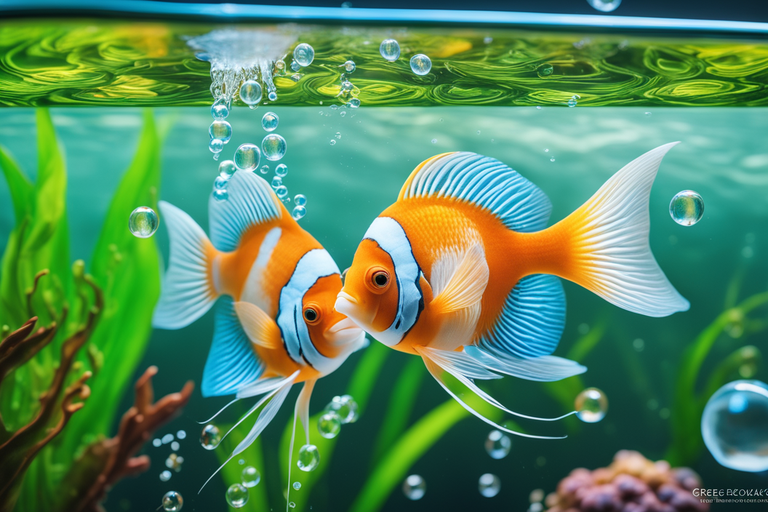
Overall, both the filter and the air pump need to be running at all times. The filter should be cleaned regularly to ensure that it’s working properly and the air pump should be cleaned and checked regularly to make sure that it’s working correctly. By running both the filter and the air pump, you can ensure that your tank is clean and healthy, and your fish will be happy and healthy.
Addressing Filter Noise Concerns
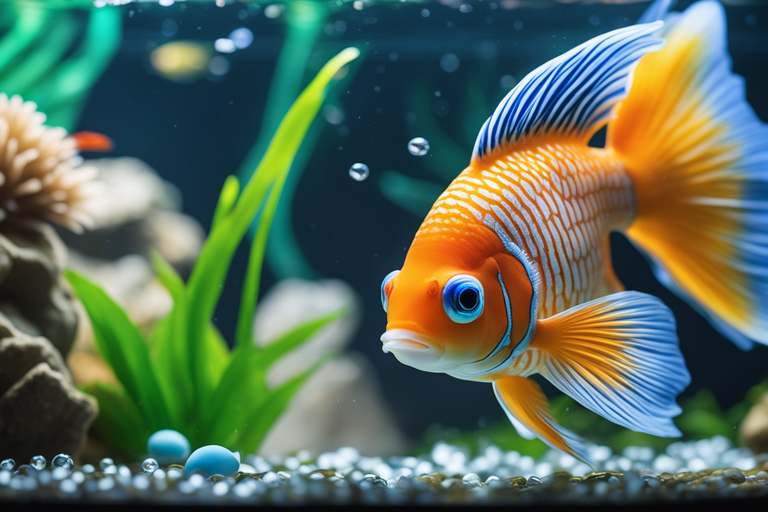
You can reduce filter noise by regularly cleaning the filter and using a filter with adjustable flow settings. Placing the filter on a soft surface can also help minimize noise. Aquarium owners should also consider raising the water level to reduce waterfall noise and using sponge filters that produce less noise. Keeping the filter running all the time is important for a healthy aquarium. However, if the noise is too much, there are other things you can do.
To start, turn off the filter while feeding your fish to give the motor a break. Then, raise the water level to increase water movement and surface agitation. You can also use foam padding to dampen vibrations and try to get a filter that’s suitable for your fish tank size. It’s important to remember that filters are great for keeping the tank clean, but they need to be used correctly.
How Often Aquarium Filters Need Maintenance
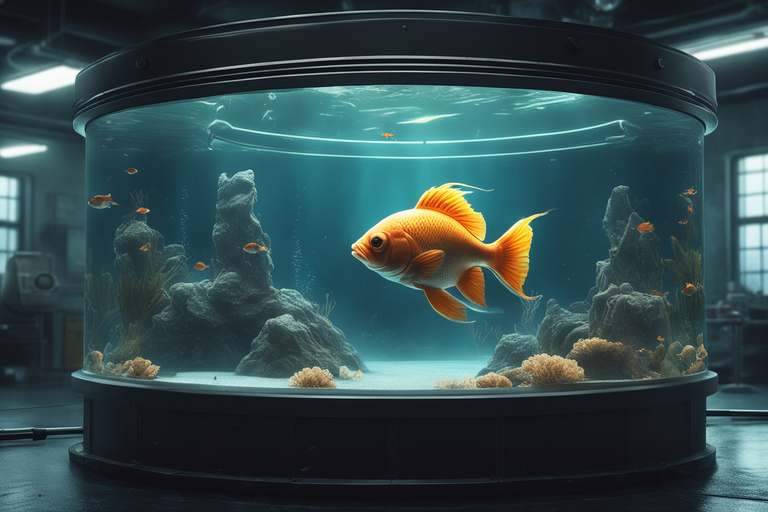
You need to regularly maintain your aquarium filter to ensure it runs optimally and your fish stay healthy. Aquarium filtration is a key component of a healthy aquarium, and regular maintenance of your filter is essential. Aquarium filters work to remove impurities, like ammonia and nitrite, from the water and keep it clean and healthy. Depending on the size of your tank and the type of filter you have, you may need to clean your filter every few weeks or every few months.
Aquarium water changes should also be done regularly to remove debris and to ensure the water is clean and healthy.
Aquarium equipment should also be checked regularly to make sure it’s in good working order. If there’s a build-up of debris on the filter or the filter is malfunctioning, it can lead to a decrease in water quality and an increase in nitrate and nitrite levels, which can be harmful to your fish. Biological, mechanical and chemical filtration should also be monitored regularly to ensure that they’re functioning properly.
Regular maintenance of your aquarium filter is essential to ensure your fish have a safe and healthy environment. Cleaning the filter regularly and performing water changes can help to keep the water free of impurities and reduce the levels of nitrate and nitrite. Additionally, checking the aquarium equipment and monitoring the biological, mechanical and chemical filtration will help to ensure your fish are living in a healthy and clean environment.
Balancing Filter Efficiency with Fish Health.
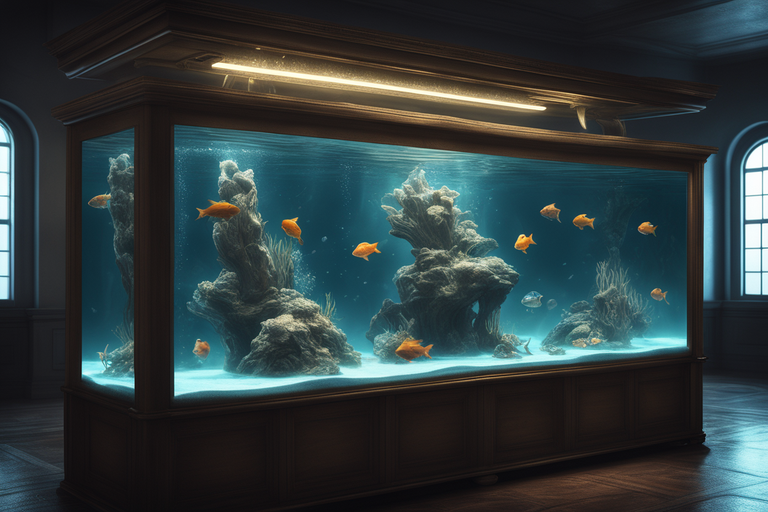
Balancing a filter’s efficiency with fish health is essential. To do this, it’s recommended that aquarium filters should run all the time. Turning off the filter can reduce oxygen flow in the water and be harmful to fish.
To properly maintain a filter, it’s important to do the following:
- Clean the filter regularly to prevent noise caused by debris.
- Use a filter with adjustable flow settings to reduce noise.
- Place the filter on a soft surface or use foam padding to dampen vibrations.
- Consider using a sponge filter which produces less noise than other types of filters.
The type of filter used affects the power consumption of the filter. Filters such as canister filters, internal filters, and power filters all consume different amounts of power. The average power consumption is 3-5 watts per hour.
It’s best to keep the filter running all the time to ensure a healthy environment for the fish and other aquatic life. Turning off the filter for too long can lead to bad oxygen levels and can be dangerous for fish.
To ensure the best health for your fish, balance the filter efficiency with fish health.
Should you turn off filter when feeding fish?
There is no definitive answer to the question of running the filter when feeding your fish, as it depends on various factors such as the type of filter, the type of food, and the type of fish you have. However, here are some possible advantages and disadvantages of switching off the filter during feeding time:
Advantages:
- Reduced water flow: This can help some fish, especially those with long fins or slow swimming abilities, to catch their food more easily without being pushed around by the current. It can also prevent food from being blown away from the feeding area.
- Prevents food from being sucked into the filter: This can reduce waste buildup and improve the efficiency of the filtration process. However, a small amount of food in the filter can also feed the beneficial bacteria and help maintain the nitrogen cycle.
- Food can sink to the bottom of the tank: This can benefit bottom-dwelling fish that may otherwise miss out on their food if it stays in the upper or middle levels of the water column.
- Saves energy: This can lower your electricity bill and reduce your environmental impact.
Disadvantages:
- Reduced water flow: This can also have negative effects, such as creating stagnant areas in the tank, reducing oxygen levels, and allowing food to accumulate in certain spots. It can also prevent food from reaching all fish, especially those that live in different levels of the tank or have different feeding habits.
- Food can sink to the bottom: This can also cause problems, such as increasing the organic load on the substrate, creating ammonia spikes, and attracting unwanted pests like snails or worms. It can also make it harder to monitor how much food your fish are eating and whether they are getting enough nutrition.
- Interrupts the filtration cycle: This can affect the biological and mechanical filtration of your tank, which are essential for maintaining water quality and fish health. It can also stress your filter and shorten its lifespan.
As you can see, there are pros and cons to both options, so you may need to experiment and see what works best for your tank. Some general tips are:
- Feed your fish only as much as they can eat in a few minutes, and remove any uneaten food after feeding.
- Adjust the position and direction of your filter output nozzle or spray bar to create a suitable water flow for your fish and food.
- Choose a type of food that matches your fish’s natural feeding behavior and preferences, such as flakes, pellets, frozen, live, etc.
- Observe your fish’s behavior and health regularly and make changes if needed.

